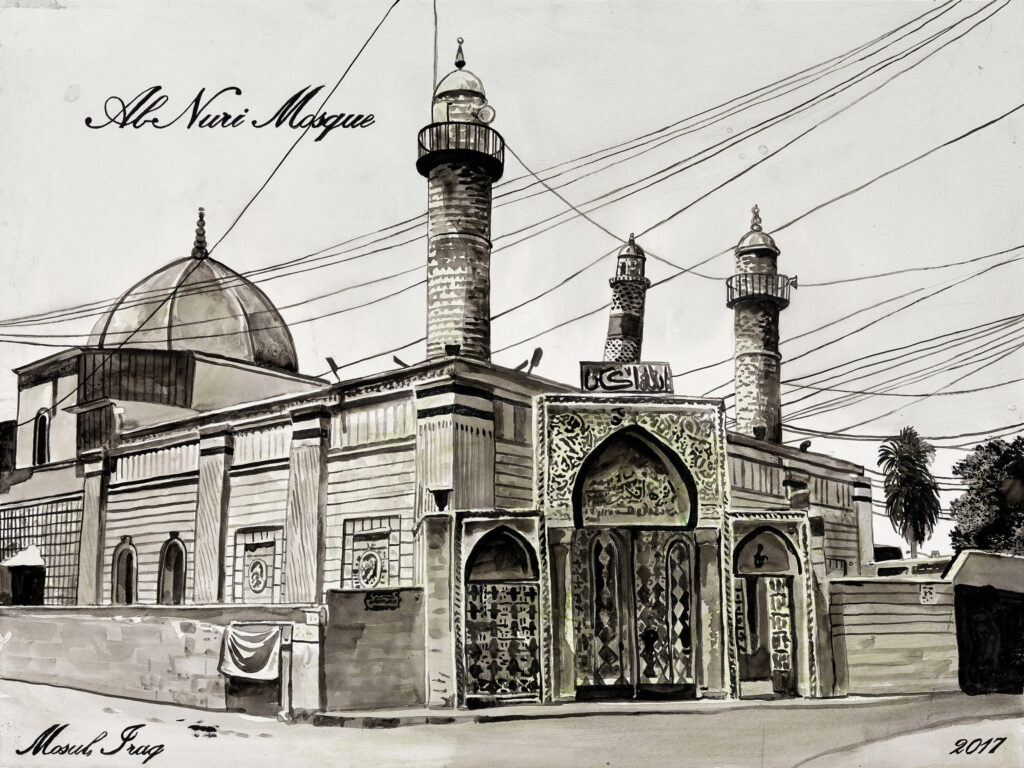Mosul, Iraq
Detonated 2017

Requested by Kim L. & Anon.
The Great Mosque of al-Nuri (Arabic: جامع النوري) was a famous mosque in Mosul, Iraq. It was nicknamed “the hunchback” (Arabic: الحدباء) due to its leaning minaret, which supposedly bowed as the prophet Muhammed ascended into heaven. According to tradition, the mosque was built by Nur ad-Din Zangi, a Turkomanatabeg of the Great Seljuk Empire and sultan of its Syrian province from 1172–1173. When Mosul was occupied by the Islamic State of Iraq and the Levant in 2014, residents of Mosul protected the mosque by forming a human chain around it. ISIL’s leader Abu Bakr al-Baghdadi then used the mosque to declare ISIL’s caliphate, promising that ISIL’s black flag would never be lowered from the mosque. When ISIL faced defeat during the 2017 Battle of Mosul, they detonated explosives inside the mosque, destroying it. In 2018, United Arab Emirates pledged to reconstruct the mosque. Work has commenced on the reconstruction. This painting is based on a photograph from EPA that I found on a BBC site.